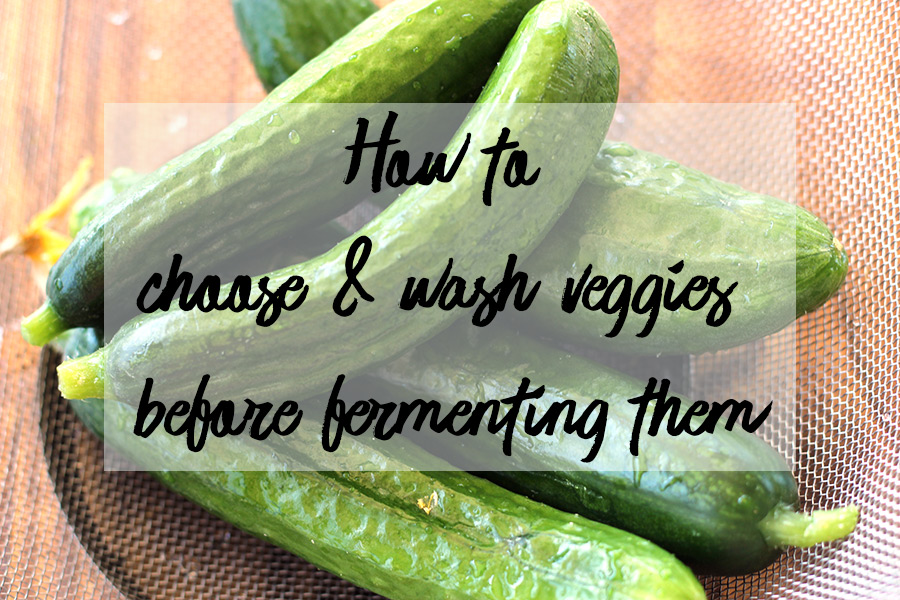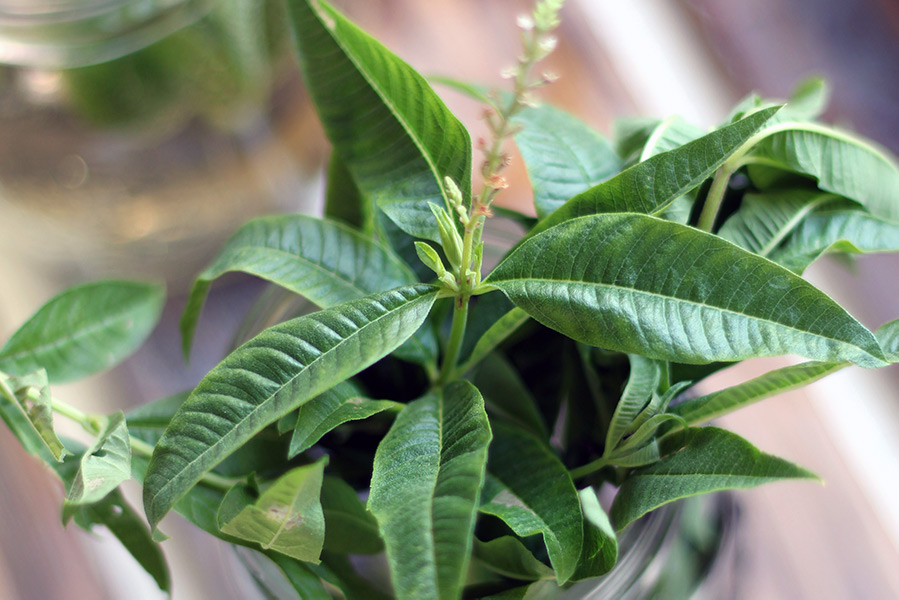
Making delicious pickles and sauerkraut starts with the quality of your ingredients. Fresh produce will make a ferment that tastes better, has higher nutrient value and will help prevent mold and other issues that can happen when fermenting.
Once picked from your garden or grocery store…
- What is the best way to wash them?
- What do you do if you’re worried about germs or can only buy conventional produce that’s been sprayed with pesticides?
- Will washing my veggies wash off all the good bacteria too?
These are valid concerns and questions I get asked all the time. Below are my tips on how to choose and wash veggies before fermenting them.
For the best results here’s how to choose produce for fermenting
1) Pick the freshest produce available
Fresh picked veggies are the best to use in fermentation, because they are more flavorful, have higher nutrients, and hold up the best when making fermented pickles. They will stay crunchy when fermented compared to produce that’s old.
2) Firm, shiny skin
Choose produce that’s firm to the touch and the skin is shiny and fresh. This is especially important when choosing cucumbers to make pickles. Fresh, firm cucumbers make the crunchiest pickles.
3) No bruising
Do not ferment veggies that are bruised, because they will end up becoming mushy very quickly when fermented. Especially when making pickles.
4) Don’t use veggies that are starting to go bad
Produce that is mushy to begin with, has soft spots, is limp or has other signs of going bad is not good to use, because it already started rotting. You don’t want to introduce mold or other bacteria to your ferment, because it will disrupt the fermentation process. It won’t taste good either.
5) Choose organic
Whenever available always choose organic produce, because it tastes better and has less chemicals and pesticides used on it.
6) Conventional produce is okay
Not everyone has access to organic or home grown produce where they live or during certain times of the year. Fermenting with conventional produce is okay. When using conventional produce try to avoid fruits and veggies on the “dirty dozen” list which is produce that is sprayed heavily with pesticides.
7) Avoid wax coatings
Try to avoid fruit and vegetables with wax coatings on them, like cucumbers and apples, because they can disrupt the fermentation process. If you can’t avoid this, then clean them with a veggie wash before fermenting them.

How to wash veggies before fermenting
Washing fruits and veggies before fermenting isn’t necessary, because the lactobacillus bacteria will take over and multiply. Harmful bacteria won’t survive.
When making sauerkraut, remove the outer leaves. You don’t need to wash or rinse the cabbage. Removing the outer leaves is enough.
If you’re concerned about germs and pesticides on your produce then you can wash them or soak them with diluted vinegar or lemon water. This will also remove wax coatings.
Washing or scrubbing won’t kill or wash off all the good bacteria. There will still be enough present for fermentation.
If you must wash your veggies, this is what I recommend:
- Rinse with tap water (you can scrub them with a brush too)
- Veggie soak – Fill up a clean sink with cold water and add 1 cup of vinegar (ACV or distilled white) – soak veggies in the sink for up to an hour.
- Homemade veggie spray – Fill a spray bottle with 2 cups of water and ½ cup of lemon juice. Spray veggies with this solution and then rinse with tap water.
- Veggie Washes from the store. You can use veggie washes from the store too. Make sure they don’t have chemicals in them. Most are basically diluted lemon water or vinegar washes.
- Never use antibacterial soap, because it will kill the beneficial bacteria too.
Picking high quality produce can make a difference in how your ferments turn out. Home grown produce is the best followed by organic, but it’s okay to use conventional produce too.
Washing your veggies isn’t necessary when fermenting them, but it won’t hurt either. Even after washing them with a veggie wash or scrubbing, there will still be enough good bacteria present.